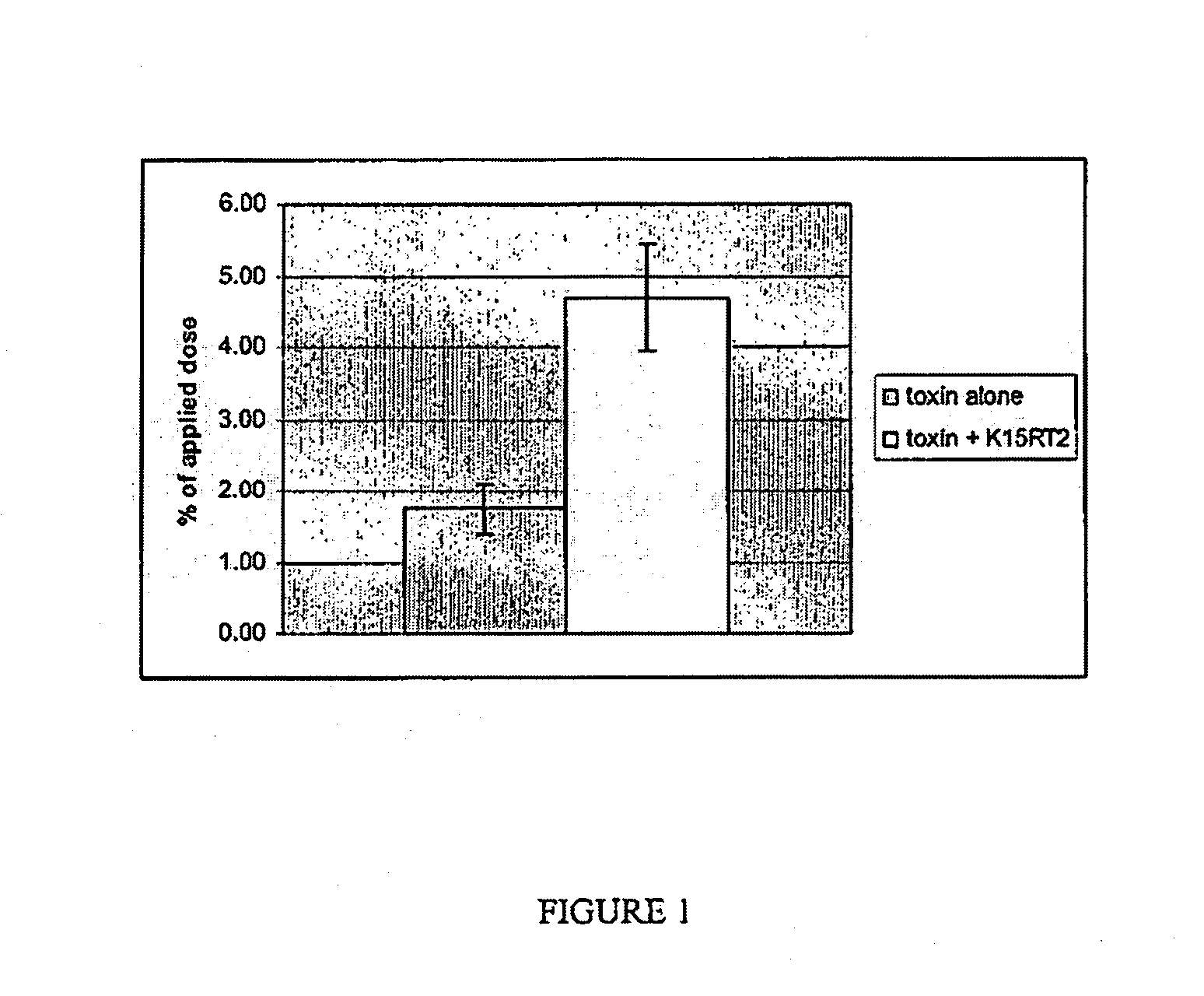Transport Molecules Using Reverse Sequence HIV-TAT Polypeptides
a reverse sequence, polypeptide technology, applied in the direction of peptides, immunological disorders, drug compositions, etc., can solve the problems of complex transmembrane or intracellular delivery of diagnostic or therapeutic agents, skin is an effective barrier to penetration, and complication may arise, so as to increase the transmembrane or intracellular penetration of cargo molecules, increase the transmembrane or intracellular penetration, and increase the effect of intracellular delivery
- Summary
- Abstract
- Description
- Claims
- Application Information
AI Technical Summary
Benefits of technology
Problems solved by technology
Method used
Image
Examples
example 1
[0057]The objective of the present study was to evaluate the possibility of delivering a large cargo molecule (botulinum toxin type A) to human skin in vitro using flow-through diffusion cells. Since the toxin is of considerable size, the dermal uptake without use of any transport molecule was expected to be negligibly low. Therefore, a carrier solution was added at different toxin / carrier ratios in an attempt to increase / facilitate dermal uptake through the stratum corneum layer. In addition to the amount present in the receptor fluid at various time points, the distribution in the various skin layers was evaluated after 24 hours. The complete Neuronox® product (i.e. the toxin / albumin complex including accessory proteins) were radio-labelled using 125I.
1.1 Test System
[0058]Preparation of Skin Membranes: Human Skin Membranes were Prepared from frozen skin sample (a single donor directly after abdominal surgery). After thawing, the skin was dermatomed using a Dermatome 25 mm (Nouvag ...
PUM
| Property | Measurement | Unit |
|---|---|---|
| thick | aaaaa | aaaaa |
| thick | aaaaa | aaaaa |
| thickness | aaaaa | aaaaa |
Abstract
Description
Claims
Application Information
 Login to View More
Login to View More - R&D
- Intellectual Property
- Life Sciences
- Materials
- Tech Scout
- Unparalleled Data Quality
- Higher Quality Content
- 60% Fewer Hallucinations
Browse by: Latest US Patents, China's latest patents, Technical Efficacy Thesaurus, Application Domain, Technology Topic, Popular Technical Reports.
© 2025 PatSnap. All rights reserved.Legal|Privacy policy|Modern Slavery Act Transparency Statement|Sitemap|About US| Contact US: help@patsnap.com


